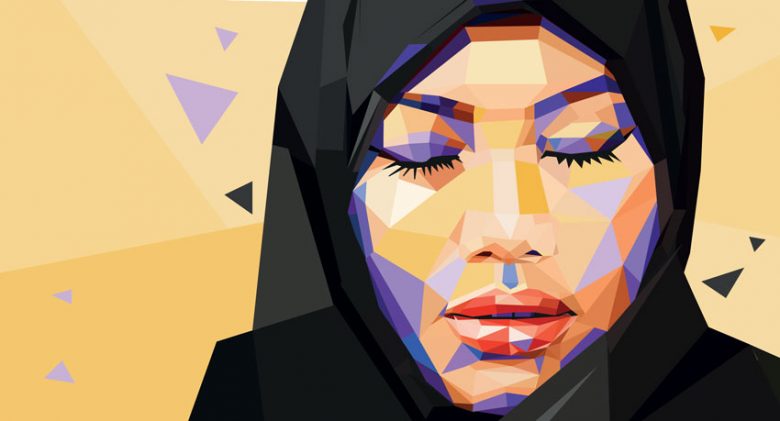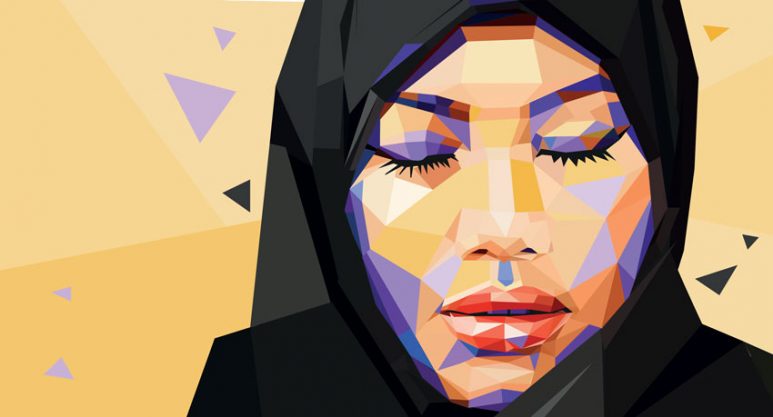By Anmol Irfan
Conversations around diversity and fair representation have been gaining ground. With big wins for movies like Black Panther, or the global popularity of K-dramas and Turkish shows like Ertugrul through platforms like Netflix, there is also the recognition that representation is so much more than just tokenistic characters or actors of colour. The stories that are being told are crucial now more than ever as the world gets smaller and smaller. Women in particular, have struggled to break into the industry both on and off screen and the debate around strong independent female characters is gaining more nuance.
Inspired by Alison Bechdel’s 1985 comic, the Bechdel test rates a movie on 3 simple questions. Any movie or tv show must feature two women in speaking roles, both must be named and must have a conversation about something other than a man. When I first found out about the Bechdel Test when it gained popularity some 10 years ago, I thought it was revolutionary. Now I realise, we can do far better, but the reaction to it and the fact that most movies still seem to fail, it tells me just how much we need to do about even basic representation.

A recent clip that went viral on Twitter brought the debate back to the representation of Muslim women in particular. The clip showed a scene from popular show Grey’s anatomy where a young doctor takes her hijab to turn it into a tourniquet to save a patient’s life. During its resurfacing the scene has garnered criticism from Muslim women on the constant use of the hijab and female characters taking it off as a sign of character development in Western media. There is little doubt that the hijab has been highly politicised, and the media reflects that. In some ways, this representation that focuses on what muslim women choose to wear or not wear is part of a much larger conversation, that continues to reduce female characters to the clothes they wear especially when it’s women of minority communities. Sabina Giado is a Sri Lankan Muslim woman and comedy film maker now living in Sydney. She talked about some of the overused and damaging tropes around Muslim women that she has seen growing up.
“A really recurring one is the Muslim woman that hates her husband and wants to run away from her husband as quickly as possible. This kind of reinforces that Muslim masculinity is toxic, just by its nature. And that Western masculinity is not toxic. Therefore, Western people need to save Muslim women from their men,” she says.
Sabina’s example is only one in a long line of flawed representations that continue to place Muslim women within and around the male gaze. It is why something like the Bechdel Test becomes so crucial to this conversation, even with its limitations – and perhaps because of.
As long as Muslim women on TV continue to be placed within that male gaze, representation will never go beyond the stereotypical flaws we continue to see. This also brings up the very different impacts of a complete lack of representation vs. flawed tokenism as an excuse for representation. British-Egyptian author Yousra Samir shares that she grew up seeing no characters who were Muslim or Arab. “There was literally no one from my background I could identify with” she shares. One of the reasons she thinks may be a cause for this is the belief that stories of Muslim women won’t be accepted by audiences.
“I think the truth is that directors, writers and producers don’t have many Muslim female friends and don’t actually know what goes on in a Muslim woman’s mind nor what her everyday life I actually like” she added.
Her words bring attention to the importance of the representation of the everyday.
Within current representation, particular characters have gained more recognition – both for applause and criticism. Adina from The Bold Type is a “proud Muslim lesbian” as her character states in her Twitter bio. Her character has been applauded for the nuance and complexity with which it has been portrayed. If I’m being perfectly honest, I was a bit skeptical of the praise because I had previously watched shows that had seen similar praise only to be disappointed. Even shows like Degrassi which overall felt far more realistic than many other characters I had seen, had their flaws. The show had a moment where one of the characters Goldie, who wore a hijab – decided she wanted to see what it felt like to take it off – although she immediately feels uncomfortable and puts it back on. In that moment, Goldie has flawless hair, and her makeup is suddenly much better. Its a small moment, but I think as a Muslim woman I hold shows with better representation to a higher standard because at that point I see them understanding the struggle, and thats when flawed representation seems even more problematic. That being said, it’s a small moment in a show that is probably one of the best measures of representing Muslim women currently out there. Between Goldie and Rasha, who is a queer Muslim refugee, the show manages to really show how there is no one story to being a Muslim woman.
That’s also where diversity comes in. As Yousra says,
“There is no one singular type of Muslim woman. Mariam Khan’s anthology, It’s Not About the Burqa, demonstrates this really well. Each Muslim woman comes from a different walk of life, and while our faith unites us in certain practices, we are talking about a major religion of 1.8 billion people that spans the globe, so cultural practices and norms differ greatly from country to country.”
I was pleasantly surprised to see Adina on screen. She balances her religious identity with that of her as a woman, a girlfriend, a photographer, a refugee and so much more. For her the hijab, may mean something completely different to what it does to me, but seeing her autonomy throughout the show, and her unapologetic nature of being who she was, is what matters more.
Sabina further adds onto this topic saying
“take Adina from The Bold Type. She’s a queer Muslim from a refugee background. You should have a queer Muslim from a refugee background in your writer’s room. You can’t just have any Muslim. For example, myself, you know I’m a Sri Lankan Muslim, I was born and raised in Dubai. I now live in Sydney, Australia, I could not write that character.”
Nadia from Elite is another character that has quickly gained prominence. Coming from a conservative immigrant family, Nadia struggles to find her place and is shown to take off her hijab as it goes against school policy, and again when she falls in love with a white guy. It’s this white guy saviour storyline that bothered viewers of the show. But I feel that even Nadia’s character is not as black and white as that. I’m never going to advocate for this shedding of the hijab as growth as being the prominent representation we see. But in Nadia’s case I also see a struggle of having to choose your path over and over again as you grow up. Its a story many Muslim girls and women may be able to relate to, perhaps in a much better had the struggle not been centered around her romance with a white man.
So the question is, should we still be talking about whether Muslim women pass the Bechdel Test? I would say no because ideally we should be moving far beyond that but that is not the case. Muslim women are still not seen as independent women with their own stories that are worth telling and that is the fundamental issue. It is why I can count the number of Muslim women who pass the Bechdel Test on one hand. There is no one definition of what it means to be a Muslim woman, and yet both in real life and on TV there is an immense pressure for one woman to represent an entire community. So much of the work that needs to be done will start when we relieve that pressure and allow Muslim women across the world to be themselves without constantly worrying about indulging in identity work that is both exhausting and unfair.
Image Credit: Mila Supinskaya Glashchenko / Shutterstock

